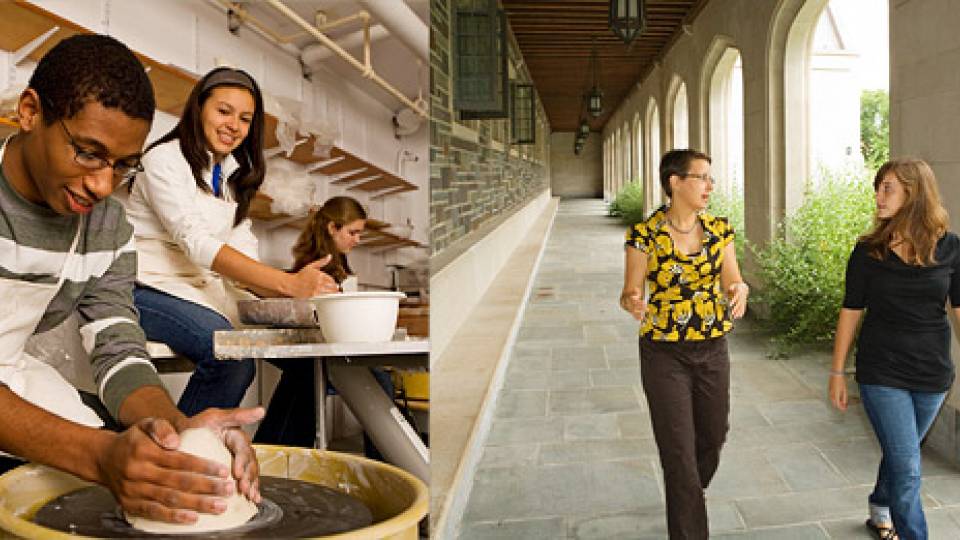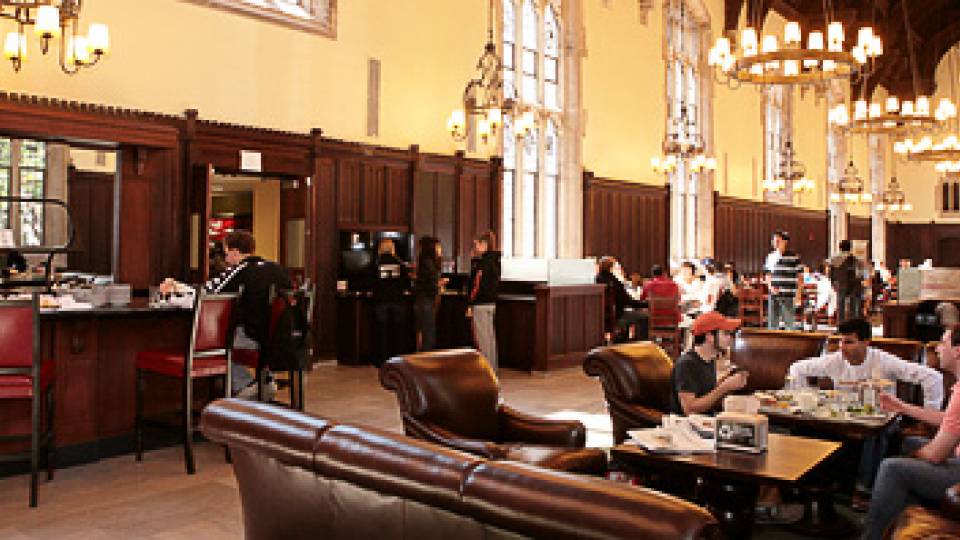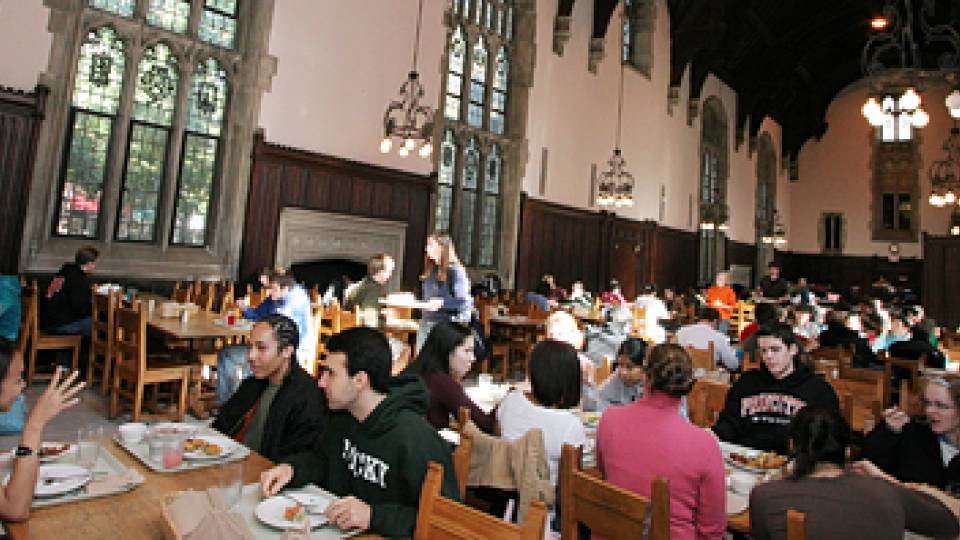Several initiatives designed to expand student choice and improve
access to a range of social and dining opportunities will give
Princeton undergraduates more freedom to select from various options
beginning next fall.
Students will be able to choose from full University dining plans
covering all meals; independent or co-op dining; plans for all meals at
one of the eating clubs; or a new shared meal-plan option that allows
upperclass students membership in the residential colleges and the
eating clubs. Because of increased spending for financial aid approved
by the University's Board of Trustees -- and also agreements formalized
with the eating clubs on Prospect Avenue -- students will be able to
choose from among these social and dining options with little
consideration of cost, said Executive Vice President Mark Burstein, who
negotiated the agreements with the clubs.
"To ensure that students can benefit from the range of available
alternatives, our goal is to eliminate economic considerations for
undergraduates at Princeton when they choose their social and dining
options," Burstein said. "We want a student to choose what he or she
feels is the best option, and money shouldn't be a major driver in that
consideration. This goal has been made possible through significant
support from President [Shirley M.] Tilghman, the University trustees
and productive conversations with each eating club."
An increase in the board funds for juniors and seniors on financial aid
will make a junior or senior's financial aid award comparable to the
average membership rate of an eating club, Burstein said.
Currently, the University designates a standard board rate for all
students -- $4,315 for the 2006-07 academic year -- which is included
in the total cost of attending Princeton. While all underclassmen eat
in the residential colleges, juniors and seniors have the option of
applying the funds allotted for meals to: a University meal contract;
the purchase of groceries if they choose to provide their own meals or
join a co-op; or the purchase of a membership contract at one of the 10
eating clubs. However, the board rate has historically been less than
the cost of a club membership, which meant that students on full
financial aid had to make up a difference on average of $2,000 if they
chose the eating-club option.
"With increased financial aid for board costs to the average eating
club membership rate -- not including the social fee -- the University
now will come close to covering the cost of a club membership for
students in their junior and senior year who want to choose the clubs,"
Burstein said. "And for students who choose other options, there
still will be a benefit from the increased funds available from the
increased board rate, which can be applied to a larger board plan in a
residential college and/or other expenses."
Juniors and seniors who choose to live in a four-year college will be
asked to purchase a meal plan of at least 95 meals per semester. Those
who want shared membership between an eating club and a four-year
residential college will pay the full membership rate at the eating
club for which they sign in or bicker. This rate will include the cost
of the 95-meal plan, Burstein said. The specific costs of the club
portion of the meal plan and the number of shared meal plans available
have been negotiated individually with each of the 10 eating clubs.
"I'm very happy with the results of the work that has been done," said
Llewellyn Ross, a 1958 alumnus and chair of the Graduate InterClub
Council, which comprises the alumni leadership of all the eating clubs.
"This is a credit to the willingness of the University to reach out to
the clubs to find a solution to eliminate a financial burden that some
students faced, and the clubs' willingness to work together with the
University to make the clubs a more affordable and acceptable
alternative for undergraduates."
The University and the eating clubs for years have been developing ways
to strengthen their relationship, and the financial support for meal
plans and the new shared meal-plan option are a positive step in the
right direction, Ross said.
According to Burstein, the collaboration recognizes the University and the clubs' shared future.
"With the University's plan to expand the student body by 500
undergraduates by 2012, we will continue to rely on the eating clubs to
feed the majority of juniors and seniors," Burstein said. "We feel it's
important to make the club option more affordable to all students who
want to make it their choice."


